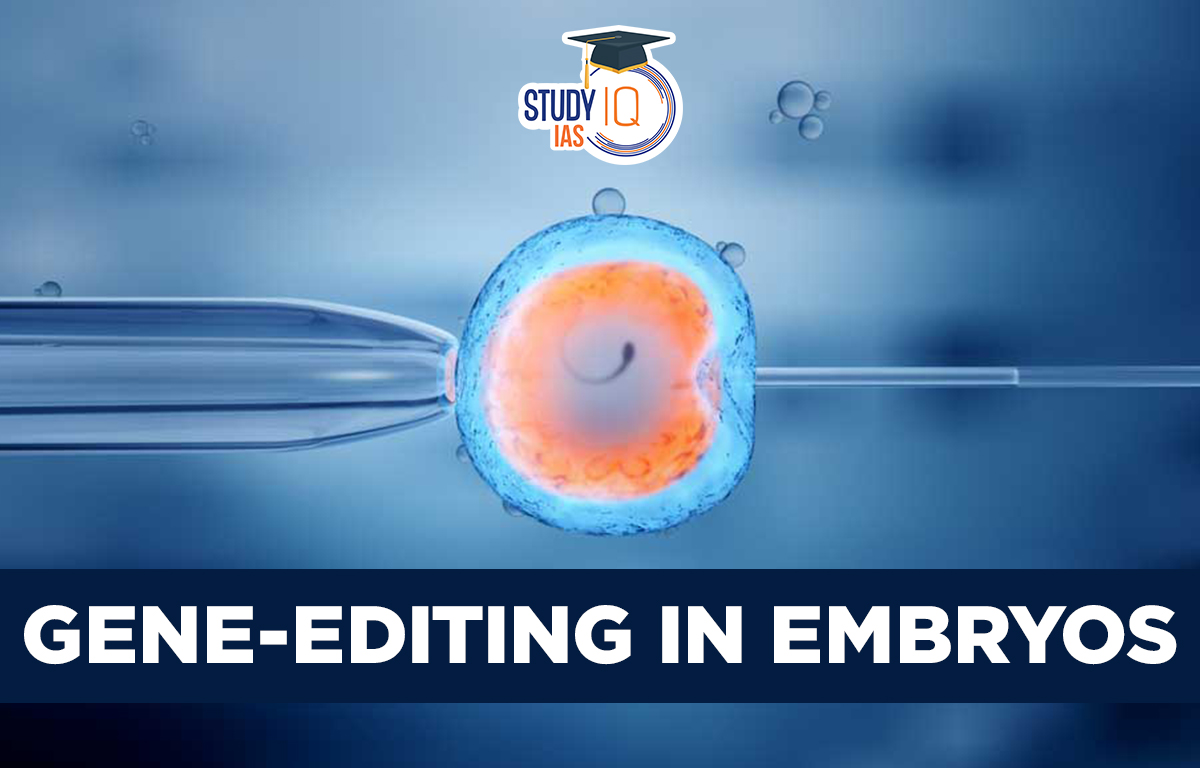Table of Contents
Context: A new study published in the journal Nature Communications has warned of the potential consequences of gene editing in embryos, which is still not fully understood.
Key Findings of the Study
- Using Clustered Regularly Interspaced Short Palindromic Repeats (CRISPR) to delete harmful disease-causing mutations could create more problems.
- CRISPR could lead to extensive gene copying from one parent to another, potentially increasing the risk of diseases.
- The extent of the DNA damage induced by CRISPR and how cells respond to it is still not fully known.
- The technology used to test gene-edited embryos could reduce the accuracy of genetic testing, leading to the misdiagnosis of embryos.
- The researchers concluded that such limitations must be addressed before gene editing technology can be used.
- Previously, a Chinese scientist who announced the birth of gene-edited twins in 2018, had used CRISPR to make the embryos resistant to the human immunodeficiency virus (HIV).
What is Gene Editing in Embryos?
- Gene editing in embryos involves using a technology called CRISPR-Cas9 to make precise, targeted changes to the DNA of an embryo at an early stage of development.
- This technology allows scientists to add, remove or alter specific genes in the embryo’s DNA.
- The process of gene editing in embryos:
- Microinjection: The process involves introducing the CRISPR-Cas9 system into the embryo using a technique called microinjection.
- The CRISPR-Cas9 system includes two components: a guide RNA that can recognize a specific DNA sequence, and the Cas9 protein that can cut the DNA at that sequence.
- Once the CRISPR-Cas9 system is introduced into the embryo, it can be used to cut the DNA at the desired location and then insert, delete or replace specific genes.
- The embryo is then allowed to develop into a fetus and eventually a baby.
Potential Advantages of Gene Editing in Embryos
- Prevention of Genetic Diseases: By editing out disease-causing genes, it may be possible to prevent inherited genetic diseases in future generations.
- Early Detection and Correction: Gene editing in embryos allows for the detection and correction of genetic mutations at an early stage of development, potentially preventing the development of disease.
- Expanded Genetic Diversity: Gene editing could enable the introduction of beneficial genetic traits into the human population, such as resistance to infectious diseases.
- Improved Understanding of Human Development: Gene editing in embryos could help researchers better understand the role of specific genes in human development.
Challenges and Concerns Associated with Gene Editing in Embryos
- Safety: There is a risk of unintended consequences, including off-target effects or unexpected changes to the DNA that could lead to health problems later in life.
- Ethical Concerns: There are concerns about the use of gene editing for non-medical purposes, such as creating “designer babies” with enhanced physical or mental traits.
- Access: Gene editing is an expensive and technically complex procedure, and it may not be accessible to all populations, leading to potential inequalities in healthcare.
- Unintended Consequences: The long-term effects of gene editing in embryos are not well understood, and there is concern that edited genes could have unexpected effects on future generations.
- Regulatory Challenges: There is currently a lack of clear regulations surrounding gene editing in embryos, making it difficult to ensure that the technology is used safely and responsibly.



 Daily Quiz 01 July 2025
Daily Quiz 01 July 2025
 China, Pakistan and Bangladesh Trilatera...
China, Pakistan and Bangladesh Trilatera...
 US Pulls Funding from GAVI-Global Vaccin...
US Pulls Funding from GAVI-Global Vaccin...





















